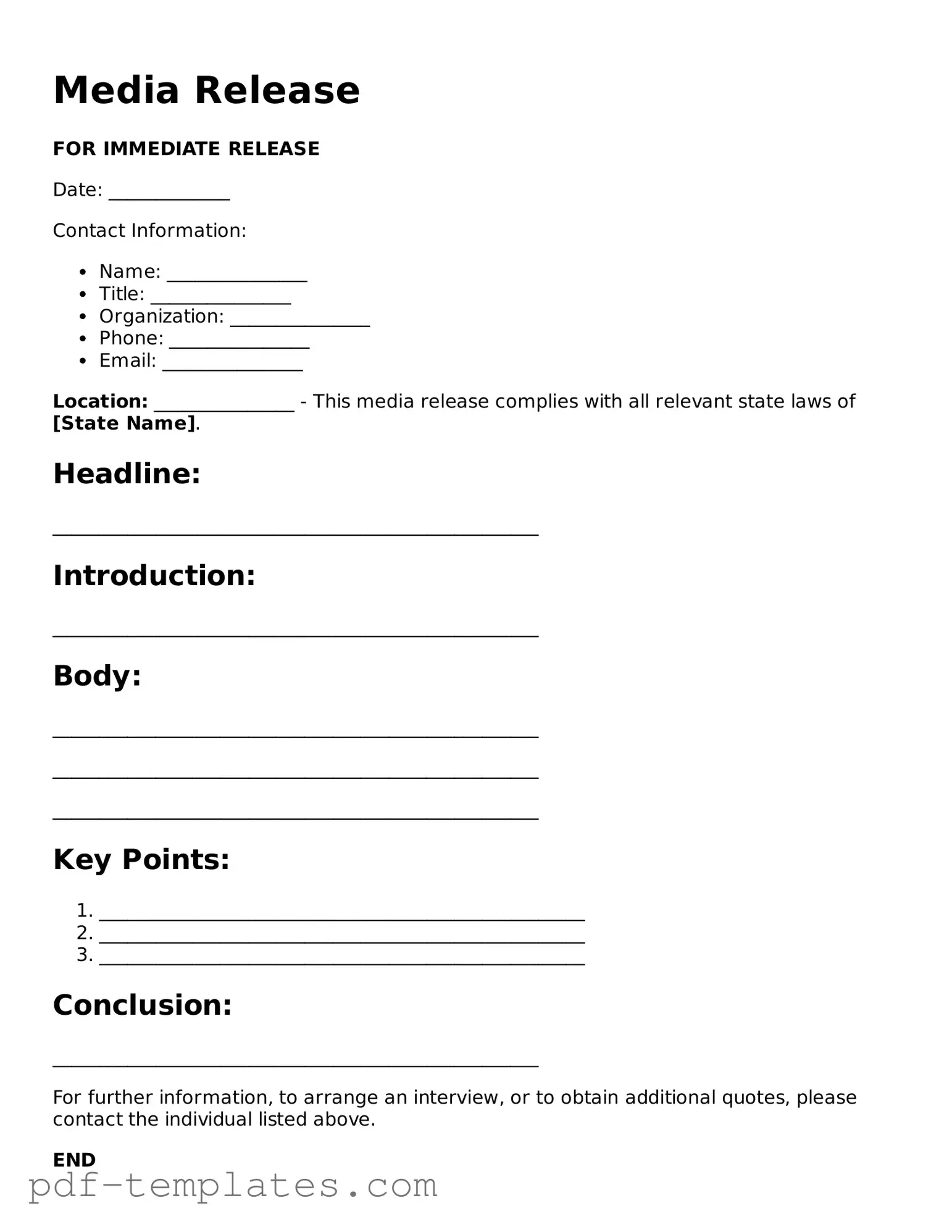The Media Release form is similar to a Consent Form, which is often used to obtain permission from individuals for specific actions. Like the Media Release, a Consent Form clearly outlines what the individual is agreeing to and what the consequences of that agreement might be. Both documents aim to protect the rights of the individual while allowing organizations to proceed with certain activities, such as filming or photography.
Another document akin to the Media Release is the Waiver of Liability. This form is used to release an organization from responsibility for injuries or damages that may occur during an event or activity. Similar to the Media Release, the Waiver of Liability requires clear communication about what participants are agreeing to. Both documents serve to inform individuals of potential risks and seek their acknowledgment.
The Release of Information form also shares similarities with the Media Release. This document allows organizations to share personal information with third parties. Like the Media Release, it requires explicit consent from the individual, ensuring they understand what information will be shared and with whom. Both forms prioritize transparency and informed consent.
Informed Consent forms are another related document. Used primarily in medical and research settings, these forms ensure that individuals understand the procedures they are agreeing to and any potential risks involved. Much like the Media Release, Informed Consent forms emphasize the importance of clear communication and informed decision-making.
In addition to these important legal documents, it is essential to understand the significance of the Release of Liability form for participants and providers alike. This form ensures that individuals acknowledge potential risks associated with certain activities and agree not to hold providers accountable for any injuries or damages incurred. To learn more about this essential document, visit Georgia PDF.
The Photo Release form closely resembles the Media Release as well. This document specifically grants permission for the use of a person's likeness in photographs. Both forms require individuals to agree to the use of their image, and they outline how that image may be used. They protect the rights of the individual while allowing for creative expression or promotional activities.
Similarly, the Talent Release form is used in the entertainment industry to secure permission from actors or performers for their work to be recorded and distributed. Like the Media Release, it ensures that individuals are aware of how their performance will be used and that they consent to those uses. Both documents help to clarify the rights and responsibilities of all parties involved.
The Non-Disclosure Agreement (NDA) can also be compared to the Media Release form. While an NDA focuses on protecting confidential information, it similarly requires the signer's consent to share or withhold information. Both documents are designed to foster trust and clarity in professional relationships, ensuring that all parties understand their obligations.
Finally, the Event Registration form can be seen as similar in purpose to the Media Release. This form collects information from participants and often includes a section for consent regarding photography or videography during the event. Both documents aim to inform participants about what to expect and require their agreement to specific terms, ensuring a smooth experience for everyone involved.
